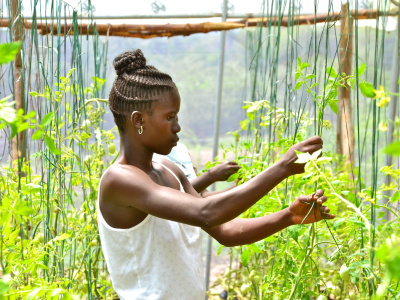
The global institutional landscape of food and agriculture: How to achieve SDG 2
This paper suggest ways to close the funding gap for SDG 2, identify the ‘Big Seven’ food and agricultural institutions key to achieving the goal in Sub-Saharan Africa, and puts forward principles and ideas for a reformed food and agriculture global institutional landscape
Summary
The world is not on track to meet Sustainable Development Goal (SDG) 2. Hunger has risen for the fourth year in a row, fuelled particularly by growing food insecurity in Sub-Saharan Africa. Achieving SDG 2 requires urgent action at country level, but also a more effective food and agriculture global institutional landscape. This paper describes this landscape and its challenges and looks at ongoing reform efforts and their shortcomings.
Considering the large SDG 2 financing gap, we explore how the institutional landscape is funded, suggesting thematic priorities to close this gap and short-term opportunities for donors to dedicate additional resources to SDG 2 in a more coordinated way. The paper also identifies the ‘Big Seven’ food and agricultural institutions key to achieving SDG 2 in Sub-Saharan Africa, and puts forward principles and ideas for a reformed food and agriculture global landscape.
An inclusive consultative process is urgently needed to streamline SDG 2 actions, which could culminate in an SDG 2 Leaders Alliance, for stronger global accountability and support at country level. But there is also a need for a longer-term strategy beyond SDG 2, as food systems become increasingly complex and link with issues beyond the traditional purview of food and agricultural institutions, such as climate change or trade. We propose a process that aims at delivering stronger food governance through a well-built global institutional architecture, by building consensus on funding and roles (including its relationships with trade and climate institutions such as the WTO and UNFCCC), and through further reforms based on political and financial feasibility.





